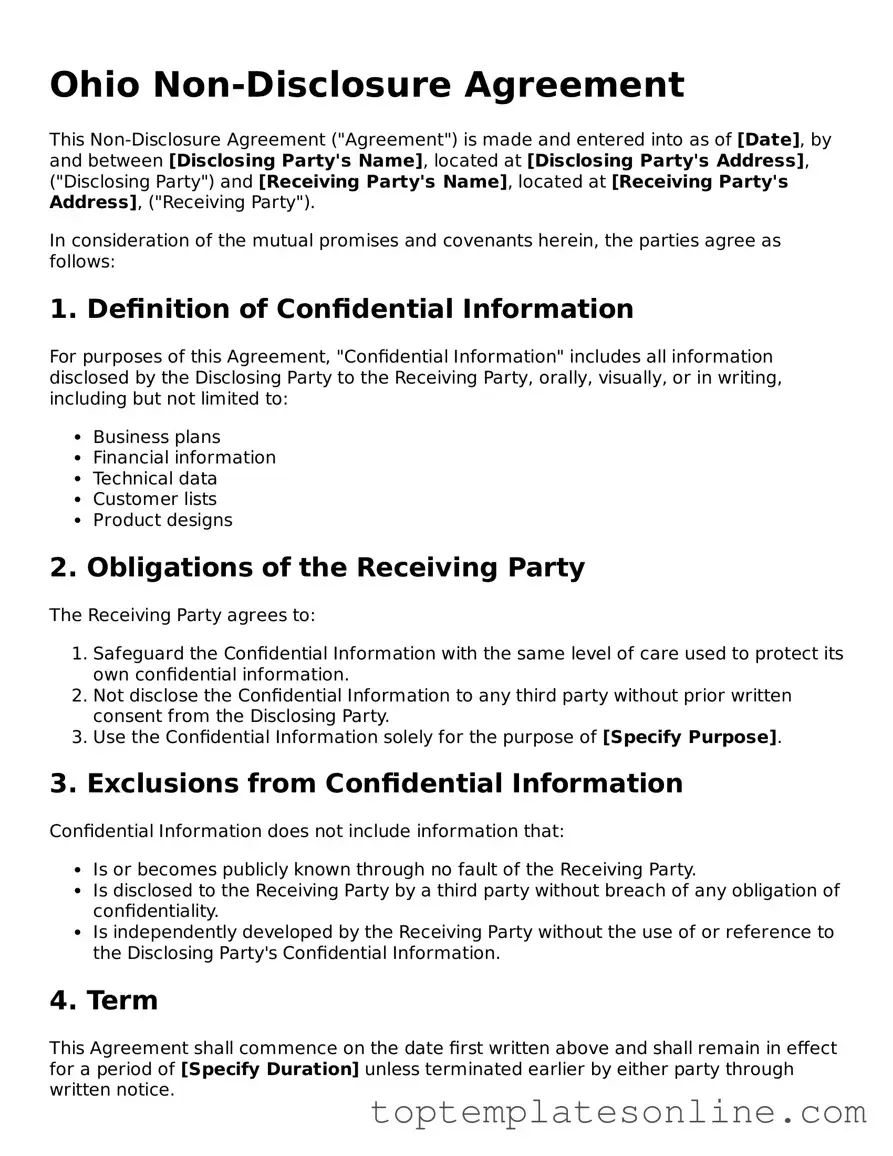Blank Non-disclosure Agreement Template for Ohio State
A Non-disclosure Agreement (NDA) in Ohio is a legal contract designed to protect sensitive information shared between parties. This agreement ensures that confidential details remain private and are not disclosed to unauthorized individuals. Understanding how to properly use this form is essential for businesses and individuals looking to safeguard their interests.
Customize Non-disclosure Agreement Here
